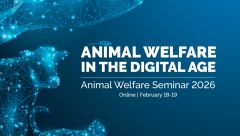Obesity is a common problem among Australian pets and is generally caused by feeding your pet more than he or she requires. Weight-related health issues can severely affect your dog’s quality of life, so during Pet Obesity Awareness Day, we want to help give you the knowledge you need to keep your dog at a healthy weight.
Let’s Get Physical
Regardless of breed or size, healthy dogs require exercise at least once a day. Factoring play time, off-leash runs, a walk or other physical activity into your daily routine is a fantastic way to ensure they get the exercise they need.
You may have a large backyard that provides space to move and run, but keep in mind this is not a substitute for regular walks, as socialising with friendly dogs and humans is also an important factor of keeping your dog healthy. Always supervise them when off-leash, and ensure you have control over your dog.
With summer fast approaching, it is best to avoid exercising your dog during high temperatures or in the middle of the day – this is especially true for flat-faced dogs, such as pugs and bulldogs, that aren’t always able to cool themselves as well.
Do note, dogs should not be exercised immediately before or after eating as it can cause problems such as bloat (which can be fatal), particularly in large ‘deep chested’ dogs such as Great Danes and German Shepherds, that have a very pronounced chest and rib cage.
Treats are a sometimes food
To ensure your pet is provided with a ‘balanced’ diet, you should feed your dog a high-quality premium commercial food, such Hill’s Pet Nutrition. Commercial dog food often has a guide on the back of the pack with an indication of how much food they need in a day. Your vet will also be able to help you calculate how much food your dog should be eating.
If you wish, you could also add other foods such as human-grade raw meat (e.g. lamb), raw meaty bones and some vegetables.
If you want to feed treats, use:
· a small portion of commercial dog food; or
· an appropriate and safe morsel of ‘human food’ such as meat or vegetables; or
· home-made treats, made under vet advice.
Always check if the treat is safe to feed. See our diet guide here.
However, iIf you have already recognised your dog may be overweight, even slightly, try to avoid giving treats as this might make the problem worse. Certainly, avoid high-calorie treats such as peanut butter or cheese.
Know how to spot a pudgy pooch
You can use this helpful scale from the World Small Animal Veterinary Association to determine whether your dog’s weight has become a cause for concern – be it under or overweight. Talk with your vet if you notice your pet is on either end of the scale.
Regular trips to the vet
Making sure your dog attends its annual and scheduled vet visits is a great way to stay on top of their health. Your vet will be able to check if your pooch’s diet is still appropriate, whether they are getting enough exercise, and spot any potential health issues.
Worried about your furry friend? If you start to have any concerns about your pet’s weight, or any health issues, always have a chat with your Vet.







